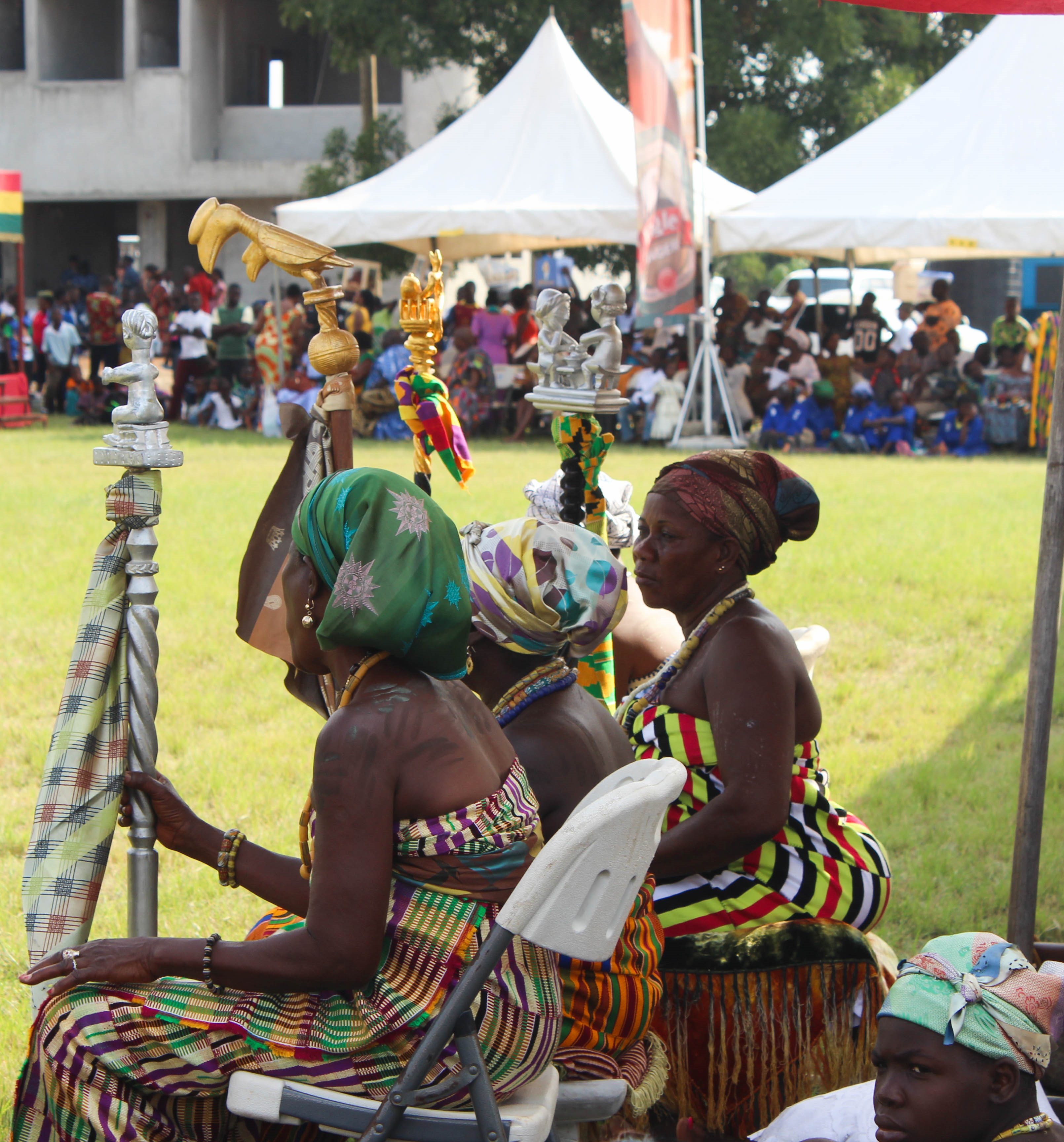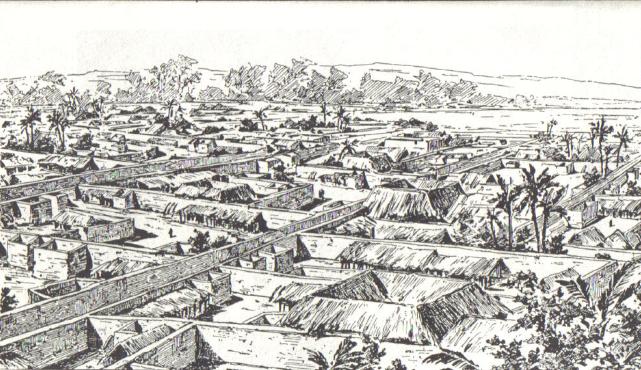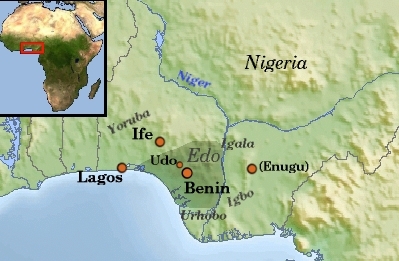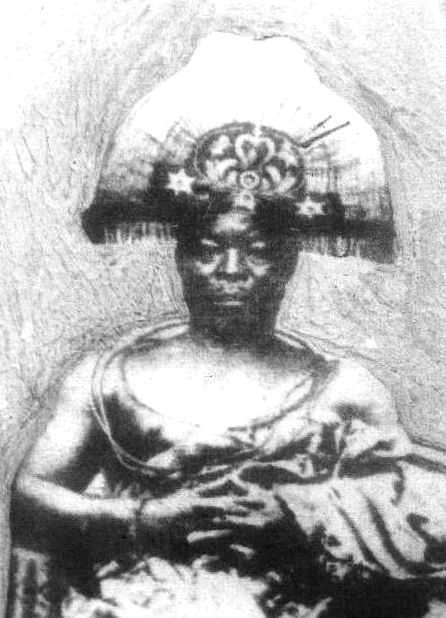|
Idia
Idia was the mother of Esigie, who reigned as Oba (king) of the Edo people from 1504 to 1550 Historians do know that Idia was alive during the Idah war (1515-1516) because she played a role that led to a great Benin victory. It has been argued that Idia, therefore, was the true power behind the throne of her son. She played a significant role in the rise and reign of her son, being described as a great warrior who fought relentlessly before and during her son's reign as the Oba (king) of the Edo people. Queen Idia was instrumental in securing the title of Oba for her son Esigie following the death of his father Oba Ozolua. To that end, she raised an army to fight off his brother Arhuaran who was supposed to be the Oba by right and tradition but was subsequently defeated in battle. Esigie’s mother became the 17th Oba of Benin. Idia first entered the royal household because Ozolua, the Oba from 1483 until 1514 saw her dance, and after the dance, he wanted to make Idia, his ... [...More Info...] [...Related Items...] OR: [Wikipedia] [Google] [Baidu] |
Benin Ivory Mask
The Benin ivory mask is a miniature sculptural portrait in ivory of Idia, the first Iyoba (Queen Mother) of the 16th century Benin Empire, taking the form of a traditional African mask. The masks were looted by the British from the palace of the Oba of Benin in the Benin Expedition of 1897. Two almost identical masks are kept at the British Museum in London and at the Metropolitan Museum of Art in New York City.Metropolitan Museum CollectioQueen Mother Pendant Mask: Iyoba MetMuseum, retrieved 1 November 2014 Both feature a serene face of the Queen Mother wearing a beaded headdress, a beaded choker at her neck, scarification highlighted by iron inlay on the forehead, and all framed by the flange of an openwork tiara and collar of symbolic beings, as well as double loops at each side for attachment of the pendant. There are also examples on the same theme at the Seattle Art Museum and the Linden Museum, and one in a private collection. The British Museum example in particular ... [...More Info...] [...Related Items...] OR: [Wikipedia] [Google] [Baidu] |
Iyoba
The Iyoba of Benin is an important female titleholder in the chieftaincy system of the Kingdom of Benin, a Nigerian traditional state. She is otherwise known in English as the Queen Mother. History When King Ozolua died in the fifteenth century, he left behind two sons to dispute the royal succession: Esigie controlled Benin City, the kingdom's metropolitan center, while his brother Arhuaran was based in Udo - an important provincial seat 20 miles away. Neither prince was prepared to yield to the other, partisans soon declared for one or the other, and Benin was plunged into a civil war shortly thereafter. Seeing an opportunity to take advantage of the situation, the hitherto vassal Igala people declared their independence from Benin and seized a swath of territory to its north. In the span of a week, Esigie found himself confronted with what now seemed like the almost certain fragmentation of his father's kingdom. His mother, Idia, is reputed to have stood behind him at this ti ... [...More Info...] [...Related Items...] OR: [Wikipedia] [Google] [Baidu] |
Benin Empire
The Kingdom of Benin, also known as the Edo Kingdom, or the Benin Empire ( Bini: '''') was a kingdom within what is now southern Nigeria. It has no historical relation to the modern republic of Benin, which was known as Dahomey from the 17th century until 1975. The Kingdom of Benin's capital was Edo, now known as Benin City in Edo State, Nigeria. The Benin Kingdom was "one of the oldest and most developed states in the coastal hinterland of West Africa". It grew out of the previous Edo Kingdom of Igodomigodo around the 11th century AD, and lasted until it was annexed by the British Empire in 1897. Oral traditions The original people and founders of the Benin Kingdom, the Edo people, were initially ruled by the Ogiso (Kings of the Sky) who called their land Igodomigodo. The first Ogiso (Ogiso Igodo), wielded much influence and gained popularity as a good ruler. He died after a long reign and was succeeded by Ere, his eldest son. In the 12th century, a great palace intrigue ... [...More Info...] [...Related Items...] OR: [Wikipedia] [Google] [Baidu] |
Queen Mothers (Africa)
Queen mother (also Queenmother) is a term used to describe certain female traditional rulers in African cultures. Though there is no general description of a "queen mother", as their roles have varied by society, political context, and culture, they generally play an important role in local government and "wield social power and influence." They are thus an important part of social, political, and cultural institutions across the African continent: the Akan, for example, recognize them as important local political actors and often trace inheritance through them in a matrilineal fashion; whereas in Uganda, the term may be used to describe women who ruled outright. The amount of power queen mothers currently hold has been diminished since pre-colonial times, though the 21st century has seen their influence grow in certain contexts. Many are members of the African Queens and Women Cultural Leaders Network, a voluntary organization. History Queen mothers were once important poli ... [...More Info...] [...Related Items...] OR: [Wikipedia] [Google] [Baidu] |
Esigie
Oba Esigie was an Oba (king) of Benin who ruled the ancient Benin Kingdom, now Benin City, Edo State, Nigeria (c.1504 – c.1550). At the time of his father Oba Ozolua's death, Esigie controlled Benin City and his brother Arhuaran controlled Udo, a town about northwest of Benin City that was nearly its equal in size and influence. Following a bitter power struggle with Arhuaran, and with major assistance and support from his mother Queen Idia, "Esigie gathered the Benin army at Unuame on the river Osse and from there launched an attack which finally destroyed the might of Udo and his half-brother Arhuanran" (Egharevba, 1968: 26). Esigie became Oba of Benin. Esigie later fended off an attack from the Igala people. Esigie started a tradition in Benin by investing his mother with the title of Iyoba (or ''Queen Mother'') and providing the Eguae-Iyoba (Palace of the Queen Mother) in lower Uselu for her use. Esigie was responsible for the abolishment of the killing of the king's m ... [...More Info...] [...Related Items...] OR: [Wikipedia] [Google] [Baidu] |
British Museum
The British Museum is a public museum dedicated to human history, art and culture located in the Bloomsbury area of London. Its permanent collection of eight million works is among the largest and most comprehensive in existence. It documents the story of human culture from its beginnings to the present.Among the national museums in London, sculpture and decorative and applied art are in the Victoria and Albert Museum; the British Museum houses earlier art, non-Western art, prints and drawings. The National Gallery holds the national collection of Western European art to about 1900, while art of the 20th century on is at Tate Modern. Tate Britain holds British Art from 1500 onwards. Books, manuscripts and many works on paper are in the British Library. There are significant overlaps between the coverage of the various collections. The British Museum was the first public national museum to cover all fields of knowledge. The museum was established in 1753, largely ... [...More Info...] [...Related Items...] OR: [Wikipedia] [Google] [Baidu] |
Benin City
Benin City is the capital and largest city of Edo State, Nigeria. It is the fourth-largest city in Nigeria according to the 2006 census, after Lagos, Kano, and Ibadan, with a population estimate of about 3,500,000 as of 2022. It is situated approximately north of the Benin River and by road east of Lagos. Benin City is the centre of Nigeria's rubber industry, and oil production is also a significant industry. The city was the most important settlement of the Edo Kingdom of Benin, which flourished during the 13th to the 19th century. It held important trade relations with Portugal during the last centuries before being captured, sacked and burnt in 1897 by a British punitive expedition. Many bronze sculptures in Benin City palace, collectively termed the Benin Bronzes, were taken by the British who followed up their victory by gradually colonizing the area, eventually incorporating the region into Colonial Nigeria. The indigenous people of Benin City are the Edo people ... [...More Info...] [...Related Items...] OR: [Wikipedia] [Google] [Baidu] |
Edo People
The Edo or Benin people are an Edoid ethnic group primarily found in Edo State, Southern part of Nigeria. They speak the Edo language and are the descendants of the founders of the Benin Empire. They are closely related to other ethnic groups that speak Edoid languages, such as the Esan, the Afemai, the Isoko, and the Urhobo. The name "Benin" (and "Bini") is a Portuguese corruption, ultimately from the word "Ubini", which came into use during the reign of Oba (ruler) Ewuare the Great, c. 1440. "Ubini", a word meaning Vexation, used by Prince Oranmiyan, son of the wealthy ruler of Uhe (Ife) to describe the frustration he encountered after he was invited to rule benin. ''Ubini'' was later corrupted to ''Bini'' by the mixed ethnicities living together at the centre; and further corrupted to ''Benin'' around 1485 when the Portuguese began trade relations with Oba Ewuare giving them coral beads. History Administrative region Edo people can be found in Nigeria's ... [...More Info...] [...Related Items...] OR: [Wikipedia] [Google] [Baidu] |
Ozolua
Ozolua, originally called Okpame and later called Ozolua n'Ibaromi (Ozolua the Conqueror), was an Oba of the Kingdom of Benin from 1483 until 1514. He greatly expanded the Kingdom through warfare and increased contact with the Portuguese Empire. He was an important Oba in both history of the Kingdom of Benin and retains importance in the folklore and celebrations of the region. History Prince Okpame was the third and the youngest son of Ewuare who had significantly expanded the Kingdom of Benin during his reign from 1440 until 1473. Following the death of Ewuare, his eldest surviving son, Esi, was assassinated by a poison arrow at his coronation and his second oldest son, Olua, ruled with significant domestic dissent for seven years. After a short-lived rule of the kingdom by a collection of chieftains, Prince Okpame was named the ''Oba'' (in either 1480 or 1483) and took the name ''Ozolua''. His rule was defined largely by significant military expansion of the Kingdom of ... [...More Info...] [...Related Items...] OR: [Wikipedia] [Google] [Baidu] |
Brass
Brass is an alloy of copper (Cu) and zinc (Zn), in proportions which can be varied to achieve different mechanical, electrical, and chemical properties. It is a substitutional alloy: atoms of the two constituents may replace each other within the same crystal structure. Brass is similar to bronze, another copper alloy, that uses tin instead of zinc. Both bronze and brass may include small proportions of a range of other elements including arsenic (As), lead (Pb), phosphorus (P), aluminium (Al), manganese (Mn), and silicon (Si). Historically, the distinction between the two alloys has been less consistent and clear, and modern practice in museums and archaeology increasingly avoids both terms for historical objects in favor of the more general " copper alloy". Brass has long been a popular material for decoration due to its bright, gold-like appearance; being used for drawer pulls and doorknobs. It has also been widely used to make utensils because of its low me ... [...More Info...] [...Related Items...] OR: [Wikipedia] [Google] [Baidu] |
Benin Expedition Of 1897
The Benin Expedition of 1897 was a punitive expedition by a British force of 1,200 men under Sir Harry Rawson in response to the ambush of a previous British party under Acting Consul General James Phillips, of the Niger Coast Protectorate. Rawson's troops captured and sacked Benin City, bringing to an end the Kingdom of Benin, which was eventually absorbed into colonial Nigeria. Background At the end of the 19th century, the Kingdom of Benin had managed to retain its independence during the Scramble for Africa, and the Oba of Benin exercised a monopoly over trade in Benin's territories which the Royal Niger Company considered a threat. In 1892, Deputy Commissioner and Vice-Consul Captain Henry Lionel Galway (1859–1949) tried to negotiate a trade agreement with Oba Ovọnramwẹn Nọgbaisi (1888–1914) to allow for the free passage of goods through his territory and the development of the palm oil industry. Captain Gallwey (as his name was then spelled) would push for ... [...More Info...] [...Related Items...] OR: [Wikipedia] [Google] [Baidu] |
Benin Bronzes
The Benin Bronzes are a group of several thousand metal plaques and sculptures that decorated the royal palace of the Kingdom of Benin, in what is now Edo State, Nigeria. Collectively, the objects form the best examples of Benin art and were created from the thirteenth century by artists of the Edo people. Apart from the plaques, other sculptures in brass or bronze include portrait heads, jewelry, and smaller pieces. Many of the dramatic sculptures date to the thirteenth century, and a large part of the collection dates to the fifteenth and sixteenth centuries. It is believed that two "golden ages" in Benin metal workmanship occurred during the reigns of Esigie ( 1550) and of Eresoyen (1735–1750), when their workmanship achieved its highest quality. Most of the plaques and other objects were looted by British forces during the Benin Expedition of 1897 as imperial control was being consolidated in Southern Nigeria. About two hundred pieces were taken to the British Museum ... [...More Info...] [...Related Items...] OR: [Wikipedia] [Google] [Baidu] |




.jpg)





.jpg)